English

行业
加入成千上万的行业领导者的行列,与 Chiggo 一起推动产品创新。

解决方案
从原材料到生产和产品增强的一站式解决方案。
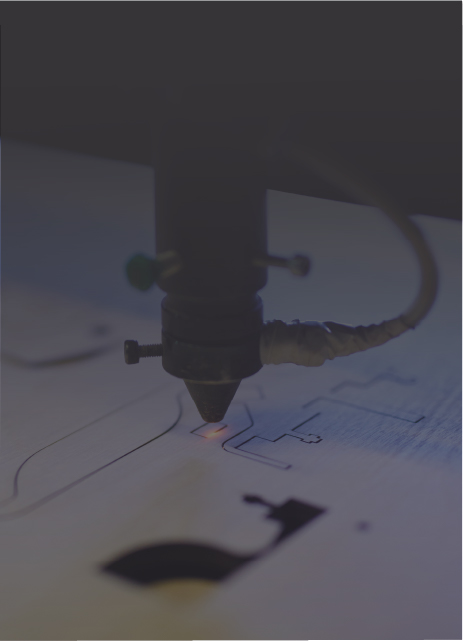
资源
您需要了解的有关数字化制造的一切。
我们每天都会遇到尼龙,它首先用作织物的丝绸替代品,在第二次世界大战期间,它出现在降落伞,生命式绳索,甚至是防弹背心衬里。今天,尼龙是最受欢迎的工程塑料,由于其高强度比率,自润滑耐磨性,化学和热稳定性以及加工多功能性。
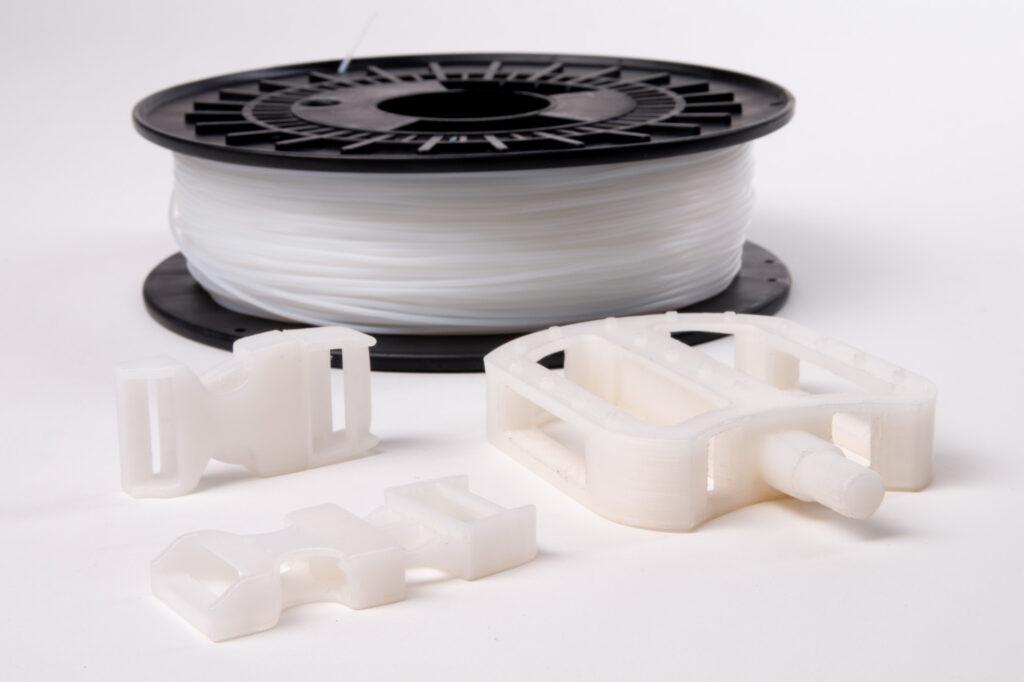
尼龙是一个合成聚合物家族的商品名称,称为聚酰胺,最初是由杜邦(Dupont)在1935年至1937年间首次开发的。其分子链由重复–NH – CO-(酰胺)链接组成,这些链之间的氢键产生了增加的结晶度。这种结构使尼龙具有高熔点,出色的耐化学性能和优质的电绝缘特性。作为热塑性塑料,可以将尼龙纺成纤维,铸成膜或注射成复杂的形状,并可以用添加剂修饰以实现广泛的特性。在接下来的部分中,我们将探讨几个最常见的尼龙等级,以及它们独特的特性如何适合不同的应用。
在深入了解细节之前,下表提供了每个尼龙等级的关键特征的简洁概述。
| 尼龙等级 | 单体使用 | 化学结构(重复单位) | - (ch₂) - 计数 | 拉伸强度(MPA) | 休息时伸长(%) | 弯曲模量(GPA) | 冲击阻力 | 吸收水分 | 融化温度。 (°C) | 耐化学性 | 维稳定性 |
| PA6 | ε-caprolactam | - [NH - (CH₂)₅– co]n | 5 | 80–90 | 50–300 | 〜2.5 | 高(非常艰难) | 〜2.8(饱和时最多〜9) | 〜220 | 非常好;被强酸/碱攻击 | 公平(湿度膨胀) |
| PA6/6 | 六甲基二胺 +脂肪酸 | - [NH - (CH₂)₆– NH – Co–(Ch₂)₄– co]n | 6,4 | 85–95 | 20–80 | 〜3.0 | 中等(更脆) | 〜2.5(饱和时最多〜8) | 255–265 | 优秀的油/燃料耐药性;气体渗透率低 | 公平(湿度膨胀) |
| PA4/6 | 1,4-二氨基丁烷 +脂肪酸 | - [NH - (CH₂)₄– NH – Co–(Ch₂)₄– co]n | 4,4 | 90–100 | 〜50 | 〜3.2 | 高(非常艰难) | 〜3.8(高于PA6/6) | 〜295 | 非常好;类似于PA6/6(抵抗燃料/油) | 公平 - 贫困(吸收最多的水分) |
| PA11 | 11-氨基酸酸 | - [NH - (CH₂)₁₀– co]n | 10 | 50–60 | 200–300 | 〜0.9 | 中等(灵活) | 〜0.25(饱和时最多〜2.5) | 〜188 | 出色的;出色的碳氢化合物和耐化学性 | 优秀(最小肿胀) |
| PA12 | 月la龙(或HMDA +十二烷酸) | - [NH - (CH₂)₁₁– co]n | 11 | 50–70 | 200–300 | 〜1.4 | mod – High(非常延性) | 〜0.25(饱和时最多〜1–2) | 〜178 | 出色的;非常耐燃料,溶剂,天气 | 优秀(最尺寸稳定) |
| PA6/10 | 六甲基二胺 +皮脂酸 | - [NH - (CH₂)₆– NH – Co–(Ch₂)₈– co]n | 6,8 | 60–70 | 〜150 | 〜2.1 | 高(寒冷的坚韧) | 〜1.5(低) | 220–225 | 优秀的化学和盐耐药性 | 好(水分吸收低) |
| PA6/12 | 六甲基二胺 +十二烷酸酸 | - [NH - (CH₂)₆– NH – Co–(Ch₂)₁₀– co]n | 6,10 | 60–65 | 〜200 | 〜2.2 | mod – High(硬) | 〜0.25(非常低) | 215–218 | 出色的;对燃料非常抗性,油 | 优秀(湿度高度稳定) |
笔记
拉伸和伸长值是针对未增强的尼龙(近似范围)。在〜50%的相对湿度(近似)下,在平衡下给出水分吸收,大多数尼龙的全水饱和值更高。 “冲击力”是指缺口撞击(IZOD/Charpy)。所有尼龙对油,油脂和碳氢化合物均具有良好的耐化学性。仅在显着的地方注意差异。
尼龙名称中的数字告诉您其分子构建块。单个数字(例如,尼龙6、11或12)来自乳糖或氨基酸的开环聚合,其中数量等于单体中的碳原子。两个数字(例如,尼龙6/6、6/12、4/6或6/10)是指二胺(第一个数字=其碳计数)和二氨酸(第二个数字=其碳计数)之间的冷凝反应。
平均–CH₂–段长度(n)控制酰胺链接之间的间距和–NH··O = C-氢键的数量,可以形成每单位长度。较大的n表示较长的亚甲基段,从而降低氢键密度并通常会降低结晶度。例如,PA12(n = 11)具有最长的间距和最低的结晶度,而PA4/6(n =(4 + 4)/2 = 4)的段最短,最高的氢键密度和最大的结晶度。如果您引入芳香环,共聚物块,填充剂或其他专业修饰符,这些结构更改会破坏规律性和转移结晶度,因此始终请参考特定的数据表或测试数据以了解其效果。

尼龙6(PA6)是一种半晶聚酰胺,该聚酰胺是通过ε-丙二酰酰胺分子的环式聚合产生的。它出色的功能之一是抗冲击力的出色。即使在低温下也不会破裂,它也会吸收冲击。 PA6还具有高抗拉力,自润滑性能和出色的耐磨性。结果,PA6是通用工程组件的首选,需要平衡强度,耐磨性和韧性,例如齿轮,轴承衬套和汽车进气歧管。在光纤部门,它被广泛用于地毯,纺织线和轮胎线中。与PA6/6和长链尼龙(如Pa11和Pa12)相比,PA6较大的熔点约为220°C,并且更逐渐结晶,PA6更易于处理,可提供较低的模具收缩和更平滑的饰面。这种易于成型使PA6特别适合于体育场座椅和枪支框架等复杂或薄壁的零件。
PA6在常见尼龙中具有最高的水分吸收,因此它可能不是暴露于湿度变化的精确零件的理想选择。对于紧密耐受性的应用,建议使用密封或预直联。

尼龙6/6(PA66)是原始的尼龙之一,在许多方面与尼龙6非常相似,但是它具有更高的结晶聚合物链。结果,它具有比尼龙6更高的拉伸强度和刚度。它也更难,更耐磨损,从而使高载荷或高摩擦应用有益于耐磨性。尼龙6/6的熔点约为260°C(500°F),比尼龙6高 - 因此,它可以在软化之前承受更高的工作温度,并且适用于更苛刻的热环境。权衡是加工性的:尼龙6/6难以塑造或挤压,需要更高的熔体和霉菌温度,并且倾向于与尼龙6相比显示出更大的霉菌收缩。
尼龙6/6也比尼龙6少于吸收水分,但仍然是吸湿性的,因此必须考虑耐受耐受性的部件的湿度。通常,它比尼龙6较小。换句话说,尼龙6更适合撞击强度或振动阻力,而当较高的屈服强度,刚度和耐热性最重要时,尼龙6/6是首选的。实际上,当需要额外的性能时,尼龙6/6通常用于与尼龙6的类似应用中,例如,高强度的机械零件,齿轮,外壳和汽车内部塑料组件,这些组件会看到升高的温度。它在工业机械,工具和电气组件中也很常见,它在宽温度范围内保持强度并提供良好的介电特性。

作为另一个短链脂肪族尼龙,PA4/6最与机械和热曲线中的PA66匹配。该聚合物具有高度结晶的结构 - 比PA6或PA66更重要,这是二胺的对称性和短长度。结果,PA4/6具有更高的熔点和较高的拉伸强度。在脂肪族尼龙中,在进入更专业的聚合物家族之前,它实际上是在机械性能的顶部附近。它还可以更快地结晶,从而实现较短的成型周期和潜在的较高的疲劳性耐药性。 PA4/6的冲击韧性可以超过PA66(尤其是在缺口测试中),这是值得注意的。
不利的一面是,PA4/6比PA66吸收更多的水分,并且生产(和购买)的成本更高。有人可能会说PA4/6以损失尼龙的性能提高了栏杆,而牺牲了水分稳定性和成本。

尼龙11是一种基于生物的长链聚酰胺,是通过11-氨基甲酸(来自蓖麻油)的自键合作产生的。它的长甲基段使它的极性远不及短链尼龙(例如PA6和PA66),因此它吸收的水分很少(在环境湿度下约0.2–0.3%),保持尺寸稳定,并保持潮湿环境中的电气。从机械上讲,它是坚硬且非常延展的(通常在200-300%的伸长率),即使在低温下也保持影响和疲劳性,因此实际上,它的行为更像是一种灵活的工程塑料,而不是坚固的塑料。
该长链结构的翻转侧是较低的拉伸强度/刚度和较低的耐热点(熔点〜185–190°C;适量的HDT),因此PA11通常不是通常指定PA66或PA66或PA4/6的高热,重载结构部件的理想选择。 PA11非常适合流体接触和室外服务:柔性燃料和气动制动线,软管/快速连接,有线夹克,密封件以及医疗或工业管。当需要坚硬的耐影零件时,它也是SLS 3D打印的主食粉末。与PA12相比,PA11提供了更高的熔点,通常会更好地紫外线/热空气老化,而PA12往往更柔软,更灵活。

PA12是一种著名的“长链”尼龙,通常与诸如vestamid或grilamid之类的商品名称有关。尼龙12在化学上与尼龙11非常相似,通常被认为在许多用途中可以互换,但是存在细微的差异。尼龙12完全是石化的(通常来自丁二烯),而尼龙11是基于生物的可再生蓖麻油,这可能是可持续性的重要性。 PA11通常具有更高的熔点,在升高温度下的性能更好,并且通常显示出更好的紫外线抗性。另一方面,PA12的灵活性稍微更灵活(延伸〜300–400%对PA11的〜200–300%),并且模量略低,因此感觉更柔软。为了吸收水分和耐化学性,它们几乎是相同的 - 两者都很棒。
值得注意的是:PA12通常是最昂贵的尼龙之一(由于其基于生物的原料,PA11上的PA11或更高)。因此,当真正需要其独特的好处时,请使用PA12 - 您不会选择PA1的PA6就足够了,因为PA6便宜得多。总而言之,PA12在尼龙家族中提供了一些最佳的尺寸稳定性和耐化学性,即使在冰冻条件下也保持延展性,使其非常适合软管,密封,快速连接,有线夹克以及其他在湿,寒冷,寒冷或化学侵略性环境中都不会失败的部分。但是,它不像PA6或PA66那样强或耐热,因此它是专家,而不是通用的替代品。

尼龙6/10(PA610)是早期的“低摩斯”尼龙之一,旨在解决PA66的湿度问题。每单位长度的酰胺组较少,它的极性较小,可吸收大约一半(或更少)PA6的水分,从而提供更好的尺寸稳定性。它还像其他长链尼龙一样显示出良好的伸长率,并保留在寒冷中的韧性,使其适用于室外或低温部分。与PA6/PA66相比,PA610的拉伸强度和刚度略低。总体而言,将PA610视为一种尼龙,可以进行一些强度和刚性,以提高水分稳定性和柔韧性。
它的熔点(〜220–225°C)和中等收缩使成型/挤出条件接近PA6。从化学上讲,PA610非常好:它可以抵抗大多数油和溶剂,并且在存在诸如氯化锌(可以积极攻击PA66)的盐的存在下对环境应力开裂具有明显抵抗力。由于其含量的一部分(脂肪酸)来自可再生能源,因此有时以更可持续的尼龙选择销售。经典用途包括刷毛和细丝(例如,牙刷和工业刷刷毛 - 历史上的杜邦“ Tynex”等级),单丝(钓线,杂草制成线)。在模制零件中,PA610用于电绝缘体/连接器,精密组件,拉链元件以及一些汽车燃油系统组件(尽管PA12和PA11占据了连续燃油管线)。与PA12相比,PA610更便宜且更强大,因此它可以替代少少的角色。简而言之,PA610作为中级尼龙填充了一个利基市场,以达到PA66的一些峰值强度,以获得PA12的大部分水分稳定性,通常以合理的成本;对于半湿环境或必须将特性保持寒冷的零件特别方便。

PA612(有时称为“ 612尼龙”)与PA610非常相似:与PA6/PA66相比,两者的水分吸收率低,尺寸稳定性差得多,在户外和低温下保持坚固,并且在215–218°C附近具有熔点,因此成型/挤出条件接近PA6。两者都非常适合流体处理连接器,精密电连接器和湿度暴露的零件,必须保持紧密的尺寸。
PA612的平衡水分吸收较低,其燃料/水蒸气渗透率较低,并且其湿状态的漂移较小,但通常成本更高。根据经验,请选择长期尺寸和电稳定性至关重要的湿环境中的PA612;当极度低温韧性或抵抗力在氯化锌 - 氯化物环境中的压力裂纹更重要,而成本敏感性更高时,请选择PA610。
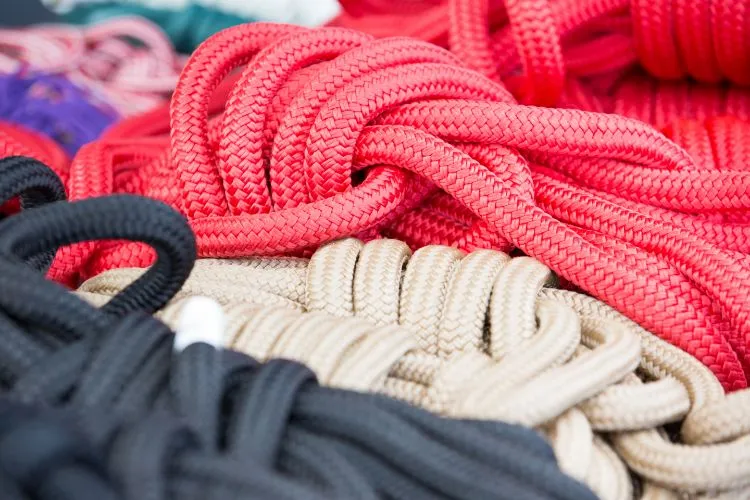
每个尼龙等级 - 从尼龙6和6,6到短链脂肪族尼龙4,6和长链尼龙6,10、6,12、11和12-取得了独特的特性平衡。尼龙6和6,6是具有高强度和刚度的通用工作试义,适用于许多承重零件,但对水分敏感。尼龙4,6增加了耐热性,并保留了高温,高应力用途的高强度,尽管水分吸收和成本较高。转向更长的链条,尼龙6,10和6,12减少了水分的吸收,并以一点点强度为代价改善了韧性 - 对于需要在潮湿或冷设置中需要稳定性的零件。最后,尼龙11和12提供了最佳的水分和化学弹性和出色的韧性,使它们可以选择流体接触,户外和灵活的应用,尽管它们的较低熔点和更高的价格将它们限制在利基市场上,但关键的角色也关键了。
准备建造了吗? Chiggo专门研究CNC加工,3D打印和尼龙零件的注射成型。我们可以帮助您选择合适的成绩,优化设计以进行水分/收缩/扭曲,并从快速原型传递到生产。上传您的CAD快速的DFM审查和报价。

通过机械加工的制造过程,可以将材料成型为所需的产品。然而,加工材料并不总是一件容易的事,因为材料的特性和具体的加工条件在决定整个过程的平稳性和效率方面起着至关重要的作用。所有这些考虑都与一个关键词“机械加工性”有关。
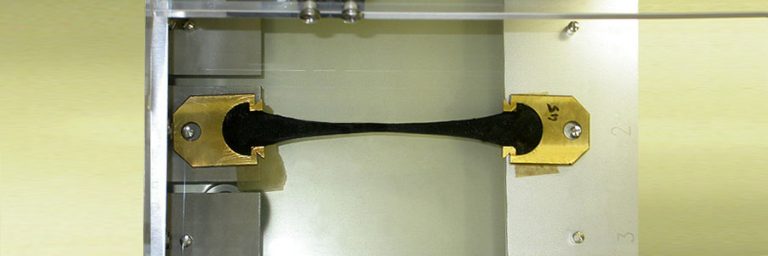
延展性是材料科学中的一个基本概念,它解释了为什么某些材料(例如金属)会在压力下显着弯曲或伸展,而另一些材料突然突然会弯曲。在本文中,我们将解释什么是延展性,如何测量,为什么重要以及哪些因素影响它。 延展性的定义 延展性是材料在断裂前张力造成塑性变形的能力。简而言之,可以将延性材料拉长很长的路,而无需捕捉 - 考虑将铜拉入电线中。相比之下,像玻璃这样的脆性材料几乎没有变形后倾向于破裂或破碎。在材料科学中,塑性变形是形状的永久变化。这与弹性变形不同,弹性变形是可以恢复的。延展性与可塑性密切相关,但更具体:可塑性是在任何模式(张力,压缩或剪切)下永久变形的一般能力,而延展性则是指张力的能力。 从原子的角度来看,许多金属的高延展性来自非方向金属粘结以及允许脱位移动的滑移系统的可用性。施加压力后,脱位滑行使金属晶体可容纳塑性应变,因此金属通常弯曲或拉伸而不是断裂。相比之下,陶瓷和玻璃具有定向离子或共价键,并且滑动非常有限,因此在张力下,它们在明显的塑料流动之前倾向于破裂。但是,并非所有金属在室温下都是延性的(例如,某些BCC金属,高碳钢和金属玻璃杯可能相对脆),并且加热玻璃弯曲的玻璃弯曲主要是由于其玻璃转换温度以上的粘性流量,而不是金属式耐耐耐高压。 测量延展性 拉伸测试是量化延展性的最常见方法:标本以单轴张力加载到骨折中,延展性据报道是休息时伸长率的百分比和降低面积的百分比。 休息时伸长百分比(a%) 骨折时量规长度的百分比增加:a%=(lf -l0)/l0×100%,其中l0是原始量规长度,而LF是断裂时的最终长度。较高的A%表示拉伸延展性更大。 减少面积百分比(RA%) 裂缝位置的横截面的百分比降低:RA%=(A0 - AF)/A0×100%,其中A0是原始面积,AF是休息时的最小面积。大的RA%反映出明显的颈部和强烈的颈后延展性。 (对量规长度不太敏感;对于非常薄的纸张而言并不理想。) 这两种措施通常是拉伸测试的一部分。例如,可以描述钢样品的伸长率20%,而在休息时降低了60%的面积 - 表明延性行为。相比之下,脆性陶瓷可能仅显示1%的伸长率,而本质上可能显示出0%的面积减少(几乎没有变薄)。伸长率和降低越大,材料的延展性就越大。 可视化延展性的另一种方法是在应力 - 应变曲线上,这是从拉伸测试获得的图。绘制应力(相对变形)的应力(每单位面积)。此曲线上的要点包括: 杨的模量(E):线性弹性区域的斜率;刚度的度量。 屈服强度(σᵧ):塑性变形的发作(通常由0.2%偏移方法定义时,当不存在尖锐的屈服点)。 最终的拉伸力量(UTS):最大工程压力。超越标本的脖子;断裂发生后期,通常处于较低的工程压力下。 断裂点:标本最终破裂的地方。 延性材料(蓝色)与脆性材料(红色)的代表性应力应变曲线 延性材料的曲线在屈服后显示长塑料区域,表明它可以在骨折前保持较大的应变。相比之下,脆性材料的曲线在屈服点附近结束,几乎没有塑料区域。总而言之,在工程应力 - 应变图(对于规定的规格长度)上,延展性反映了裂缝的总应变 - 延性材料的长时间,脆性材料的较短。但是,明显的断裂应变取决于所选的量规长,一旦颈部开始定位,颈部开始定位,因此工程曲线不是颈后延展的直接衡量。因此,规格通常在休息时报告百分比伸长率(a%)以及降低面积百分比(RA%)。 延展性和延展性有什么区别? 延展性是一种材料在不破裂而伸展张力的能力。我们以拉伸测试的伸长百分比或减少面积来量化它。如果可以将金属吸入电线,则是延展性的。锻造性是一种材料在压缩方面变形的能力(不开裂,可以锤击,滚动或压入纸板);我们通过弯曲/扁平/拔罐测试或减小厚度可以耐受多少判断。 实际上:黄金,铜和铝都是高度延展且可延展的(非常适合电线和纸板)。铅非常具有延展性,但仅适中延展性(易于滚动成薄片,较差,作为细丝)。镁在室温下的延展性有限,而锌在变暖时会更具延展性。为了制造制造,选择延性合金用于绘画,深度拉伸和下拉的功能;选择可延展的合金滚动,冲压和锻造,在压缩占主导地位的地方。温度和晶体结构移动两个特性。快速规则:延展性=张力/电线;锻造性=压缩/表。 为什么延展性很重要 延展性是制造性和服务安全性安全背后的安静主力。在工厂中,它允许将金属卷成纸板,将其拉入电线并锻造而不会破裂。在现场,它使组件能够吸收能量,重新分配应力并在失败前提供警告。 制造的延性材料 高延展性通常意味着一种材料是可行的:它可以锻造,滚动,绘制或挤出成各种形状而不会破裂。低延展性(脆性)意味着该材料很难变形,并且更适合于铸造或加工等过程(在材料不强迫塑料形状过多地改变形状)之类的过程中。 锻造和滚动:这些过程通过锤击(锻造)或在掷骰(滚动)之间将固体金属变形为形状。延性金属耐受涉及的大塑料菌株。实际上,钢板/开花被热卷成薄板,板和结构形状,例如I光束,铝很容易被伪造成组件 - 金属在压缩载荷下流动。相比之下,像铸铁这样的脆性合金倾向于在沉重的变形下破裂,因此通常通过铸造到近网状形式来形状。 挤出和电线/栏绘图:挤出将金属推动通过模具制作长而恒定的截面产品。电线/条形图将固体库存通过模具降低直径。两者都依靠塑料流。可以将延性合金(例如铝,铜和低碳钢)挤出到试管和轮廓(例如窗框,热水链截面)中,并将其抽入细线。在加工温度下没有足够的延展性的材料倾向于检查或裂缝,这就是为什么玻璃或陶瓷不会以固态挤出/绘制的原因;他们的纤维是融化的。 深图:深色绘图形成轴对称的杯子和罐,并用拳头迫使薄板进入模具;法兰向内进食,而墙壁略微稀薄。足够的延性可防止分裂和皱纹。铝饮料罐头是经典的例子。 薄板金属弯曲和冲压:车身面板和外壳的一般弯曲和冲压需要延展性,以避免边缘裂纹和橙色 - 薄荷伸展时。钢制和铝等级是针对形成性量身定制的,因此可以将复杂的形状(例如,汽车引擎盖)盖章而不会故障。 金属3D打印(AM):延展性仍然很重要。当然的零件(尤其是来自激光粉床融合(LPBF))可以显示出由于细,质感的微观结构,残留应力和孔隙率而显示出降低的延展性。压力缓解和热等静止压力(髋关节),然后经常进行轻热处理,恢复延展性并降低开裂风险;然后,TI-6AL-4V和ALSI10MG等合金可以提供有用的服务延展性。 现实世界应用的延性材料 延展性不仅是实验室指标,还直接影响现实世界结构,车辆和设备的性能。这就是为什么它在工程和设计中重要的原因: 防止突然失败并提高安全性:延性材料逐渐失效:它们在断裂前产生和吸收能量,提供可见的警告并允许负载重新分配。在建筑物中,这就是为什么结构钢受到青睐的原因 - 超负荷的梁会弯曲而不是捕捉。钢筋混凝土遵循相同的逻辑:嵌入式钢钢筋增加延展性,因此成员可以在地震需求下弯曲而不是分开。 影响(地震和碰撞应用)中的能量吸收:在动态载荷下,延展性将影响能量变成塑料工作。钢框通过屈服来消散地震力,并以钢或铝折叠的汽车碎区域的控制方式以受控的方式降低机舱减速。现代人体结构平衡强度与延展性(例如DP/Trip Steels),并且航空航天Al/Ti合金保留足够的延展性,以造鸟,加压和冷soak耐受性。 […]
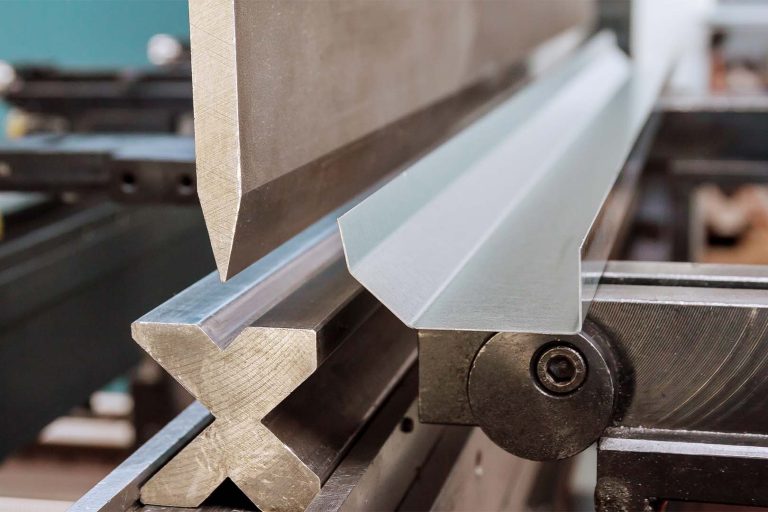
钣金制造是使用各种制造技术将金属板(通常厚度小于 10 毫米)形成所需形状的过程。完成一个产品通常涉及几个步骤,从切割、成型、到精加工和连接。每个步骤都可以通过不同的制造方法来实现。通常,不同的制造技术可以实现相似的最终结果,但最佳选择取决于成本和特定项目要求等因素。

عربي
عربي
中国大陆
简体中文
United Kingdom
English
France
Français
Deutschland
Deutsch
नहीं
नहीं
日本
日本語
Português
Português
España
Español